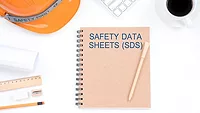Do You Want a Clean Safety Data Sheet or an Effective Product?

Photo credit: Toxitz iStock / Getty Images Plus via Getty Images
Let’s give architectural specifications the attention they deserve. Important safety and health information will be missed or unshared if we do not learn to speak the same language as the rest of the construction world.
MasterFormat (aka AIA or CSI/CSC) specifications are the universal “book” for any significant building project, and such specs do have a place to plug in restoration and abatement: Division 02 Existing Conditions. Historically underutilized, times are changing as manufacturers for environmental remediation products and processes are producing more Division 02 specs than ever, and specifiers too are using various sections, including (for example) 02 51 29 Surface Cleaning Decontamination, 02 85 00 Mold Remediation, 02 87 16 Excrement Removal and 02 82 13 Asbestos Abatement.
Contractors, meanwhile, are increasingly faced with Division 02 specs representing Existing Conditions and methods for remediation of contaminated buildings. If an architect is concerned about temperatures below 25 degrees Fahrenheit for instance, we must endeavor to know why. Interpreting architectural specifications with a critical eye is part of a comprehensive, responsible approach to chemical and job site safety.
The current swell of botanically based disinfectants and cleaning products presents an opportunity to put our information-gathering acumen to work. Again, the question becomes do you want a clean safety data sheet or an effective product? In other words, buyer beware. Some products labeled “botanical” might contain as little as 25% bio-based content, which is measured by how much new organic carbon from plants is used compared to old organic carbon found in coal and petroleum. Do you know the chemical composition of the botanical disinfectant in your line item?
U.S. Department of Agriculture BioPreferred credentials tell consumers about the bio-based content of a product and establish a rigorous certification process. I know because our Benefect line was the first (and still only) disinfectant technology to achieve this distinction. Labels can give you pieces of information, including EPA Toxicity Category, but many labels do not tell a complete story. It all points back to, if the information is missing, there’s likely a reason.
It is no accident that price-point products often come with little guidance or labeling instruction. Manufacturers with institutional memory — those with expertise and familiarity with the work being performed in the field every day — trend toward a generosity of information in their data sheets, labels, bulletins, websites and supplemental communications.
I made my niche by specializing in cleaners, antimicrobials and coatings used across the restoration and environmental disciplines. My career path seems to magnetically attract others who enjoy dissecting the latest chemical “discoveries.” And the internet is a blessing and a bane. Let’s just remember to pump the brakes on “the next best thing” that promises to solve the eternal challenges of restoration. When we slow down, gather the evidence and examine the facts, we can look beyond the SDS to see more truth than what a single document can provide, or find more information than was willingly shared.Looking for a reprint of this article?
From high-res PDFs to custom plaques, order your copy today!









